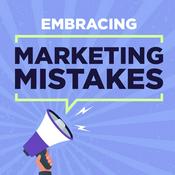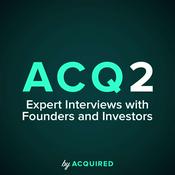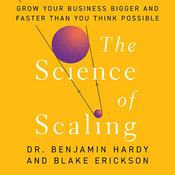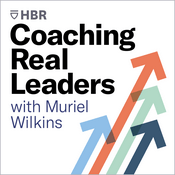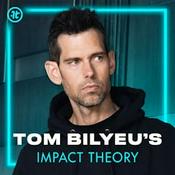73 episodes

Fei-Fei Li: World Models and the Multiverse
23/12/2025 | 22 mins.
What if the next leap in artificial intelligence isn’t about better language—but better understanding of space?In this episode, a16z General Partner Erik Torenberg moderates a conversation with Fei-Fei Li, cofounder and CEO of World Labs, and a16z General Partner Martin Casado, an early investor in the company. Together, they dive into the concept of world models—AI systems that can understand and reason about the 3D, physical world, not just generate text.Often called the “godmother of AI,” Fei-Fei explains why spatial intelligence is a fundamental and still-missing piece of today’s AI—and why she’s building an entire company to solve it. Martin shares how he and Fei-Fei aligned on this vision long before it became fashionable, and why it could reshape the future of robotics, creativity, and computational interfaces.From the limits of LLMs to the promise of embodied intelligence, this conversation blends personal stories with deep technical insights—exploring what it really means to build AI that understands the real (and virtual) world. Follow Fei-Fei Li:https://x.com/drfeifei Follow Martin Casado:https://x.com/martin_casado Stay Updated: If you enjoyed this episode, be sure to like, subscribe, and share with your friends!Find a16z on X: https://x.com/a16zFind a16z on LinkedIn: https://www.linkedin.com/company/a16zListen to the a16z Podcast on Spotify: https://open.spotify.com/show/5bC65RDvs3oxnLyqqvkUYXListen to the a16z Podcast on Apple Podcasts: https://podcasts.apple.com/us/podcast/a16z-podcast/id842818711Follow our host: https://x.com/eriktorenberg Check out everything a16z is doing with artificial intelligence here, including articles, projects, and more podcasts. Please note that the content here is for informational purposes only; should NOT be taken as legal, business, tax, or investment advice or be used to evaluate any investment or security; and is not directed at any investors or potential investors in any a16z fund. a16z and its affiliates may maintain investments in the companies discussed. For more details please see a16z.com/disclosures. Hosted by Simplecast, an AdsWizz company. See pcm.adswizz.com for information about our collection and use of personal data for advertising.

Building the “See Something, Say Something” AI for Every Camera
16/12/2025 | 39 mins.
a16z's Martin Casado sits down with Shikhar Shrestha, CEO and cofounder of Ambient, the company bringing agentic AI to physical security.Shikhar shares how a traumatic armed robbery at age 12—and a security camera that no one was watching—sparked his mission to make every camera intelligent.They discuss how Ambient's AI monitors camera feeds in real-time to detect threats and prevent incidents before they happen, navigating COVID as a physical security company, building their own reasoning VLM called Pulsar, and why the future of security is AI not just detecting threats but automatically responding to them.If you enjoyed this episode, please be sure to like, subscribe, and share with your friends.Follow Shikhar on X: https://x.com/shikharshresthaFollow Martin on X: x.com/martin_casado Check out everything a16z is doing with artificial intelligence here, including articles, projects, and more podcasts. Please note that the content here is for informational purposes only; should NOT be taken as legal, business, tax, or investment advice or be used to evaluate any investment or security; and is not directed at any investors or potential investors in any a16z fund. a16z and its affiliates may maintain investments in the companies discussed. For more details please see a16z.com/disclosures. Hosted by Simplecast, an AdsWizz company. See pcm.adswizz.com for information about our collection and use of personal data for advertising.

The AI That Found A Bug In The World’s Most Audited Code
10/12/2025 | 39 mins.
Matt Knight spent five years as OpenAI’s CISO. Now he runs what colleagues call “the most interesting job at the company”: leading Aardvark, an AI agent that finds security vulnerabilities the way a human researcher would—by reading code, writing tests, and proposing patches. It recently found a memory corruption bug in OpenSSH, one of the most heavily audited codebases in existence.In this conversation with a16z’s Joel de la Garza, Matt traces the evolution from GPT-3 (which couldn’t analyze security logs at all) to GPT-4 (which could parse Russian cybercriminal chat logs written in slang) to today’s models that discover bugs humans have missed for decades. They also discussed the XZ Utils backdoor that nearly compromised half the internet and why 3.5 million unfilled security jobs might finally get some relief, and how Aardvark could give open source maintainers a fighting chance against nation-state attackers.If you enjoyed this episode, please be sure to like, subscribe, and share with your friends.Follow Matt Knight on X: https://x.com/embeddedsecFollow Joel de la Garza on LinkedIn: https://www.linkedin.com/in/3448827723723234/ Check out everything a16z is doing with artificial intelligence here, including articles, projects, and more podcasts. Please note that the content here is for informational purposes only; should NOT be taken as legal, business, tax, or investment advice or be used to evaluate any investment or security; and is not directed at any investors or potential investors in any a16z fund. a16z and its affiliates may maintain investments in the companies discussed. For more details please see a16z.com/disclosures. Hosted by Simplecast, an AdsWizz company. See pcm.adswizz.com for information about our collection and use of personal data for advertising.

The Death of Data Gatekeeping: AI Makes Everyone An Analyst | Hex Cofounder
05/12/2025 | 1h 22 mins.
Most companies still rely on dashboards to understand their data, even though AI now offers new ways to ask questions and explore information. Barry McCardel, CEO of Hex and former engineer at Palantir, joins a16z General Partner Sarah Wang to discuss how agent workflows, conversational interfaces, and context-aware models are reshaping analysis. Barry also explains how Hex aims to make everyone a data person by unifying analysis and AI in one workflow, and he reflects on his post about getting rid of their AI product team and the process behind Hex’s funny launch videos.Timecodes: 0:00 – The problem with dashboards1:20 – The evolution of data teams and AI’s role2:05 – Democratizing data: challenges and opportunities3:45 – The rise of agentive workflows9:48 – Threads and the changing UI of data analysis13:16 – Building AI agents: lessons from the notebook agent16:12 – Model capabilities and the future of AI in data19:10 – The importance of context and trust in data analysis24:34 – Semantic models and context engineering29:27 – Data team roles in the age of AI31:52 – Accuracy, trust, and evaluating AI systems37:43 – Building Hex: embracing AI as core, not an add-on48:48 – Pricing, value capture, and the future of SaaS55:55 – The modern data stack and industry consolidation1:04:26 – Acquisitions and owning the data insight layer1:06:46 – Lessons from Palantir: forward-deployed engineering1:13:11 – Commitment engineering and customer collaboration1:17:25 – Brand, launch videos, and having fun in SaaSResources:Follow Barry McCardel on X: https://x.com/barraldFollow Sarah Wang on X: https://x.com/sarahdingwang Stay Updated:If you enjoyed this episode, be sure to like, subscribe, and share with your friends!Find a16z on X: https://x.com/a16zFind a16z on LinkedIn:https://www.linkedin.com/company/a16zListen to the a16z Podcast on Spotify: https://open.spotify.com/show/5bC65RDvs3oxnLyqqvkUYXListen to the a16z Podcast on Apple Podcasts: https://podcasts.apple.com/us/podcast/a16z-podcast/id842818711Follow our host: https://x.com/eriktorenbergPlease note that the content here is for informational purposes only; should NOT be taken as legal, business, tax, or investment advice or be used to evaluate any investment or security; and is not directed at any investors or potential investors in any a16z fund. a16z and its affiliates may maintain investments in the companies discussed. For more details, please see http://a16z.com/disclosures. Check out everything a16z is doing with artificial intelligence here, including articles, projects, and more podcasts. Please note that the content here is for informational purposes only; should NOT be taken as legal, business, tax, or investment advice or be used to evaluate any investment or security; and is not directed at any investors or potential investors in any a16z fund. a16z and its affiliates may maintain investments in the companies discussed. For more details please see a16z.com/disclosures. Hosted by Simplecast, an AdsWizz company. See pcm.adswizz.com for information about our collection and use of personal data for advertising.

Why Social Engineering Now Works on Machines
02/12/2025 | 25 mins.
Ian Webster built PromptFoo after watching 200 million Discord users systematically dismantle his AI agent—now Fortune 10 companies pay him to break theirs before customers do. The "lethal trifecta" sounds academic until you realize it's already happening: untrusted input plus sensitive data plus an exfiltration channel equals the security incident that just cost a SaaS company its multi-tenancy guarantees. Webster's red-teaming agents don't use signatures—they have 30,000 conversations with your system, socially engineering their way past guardrails the same way a teenager with emojis convinced ChatGPT to leak data, except his tools find the vulnerability before your users become the pen testers.Follow Ian Webster on X: https://x.com/iwebstFollow Joel on LinkedIn: https://www.linkedin.com/in/3448827723723234/ Check out everything a16z is doing with artificial intelligence here, including articles, projects, and more podcasts. Please note that the content here is for informational purposes only; should NOT be taken as legal, business, tax, or investment advice or be used to evaluate any investment or security; and is not directed at any investors or potential investors in any a16z fund. a16z and its affiliates may maintain investments in the companies discussed. For more details please see a16z.com/disclosures. Hosted by Simplecast, an AdsWizz company. See pcm.adswizz.com for information about our collection and use of personal data for advertising.
More Business podcasts
Trending Business podcasts
About AI + a16z
Listen to AI + a16z, Embracing Marketing Mistakes and many other podcasts from around the world with the radio.net app

Get the free radio.net app
- Stations and podcasts to bookmark
- Stream via Wi-Fi or Bluetooth
- Supports Carplay & Android Auto
- Many other app features
Get the free radio.net app
- Stations and podcasts to bookmark
- Stream via Wi-Fi or Bluetooth
- Supports Carplay & Android Auto
- Many other app features


AI + a16z
download the app,
start listening.
